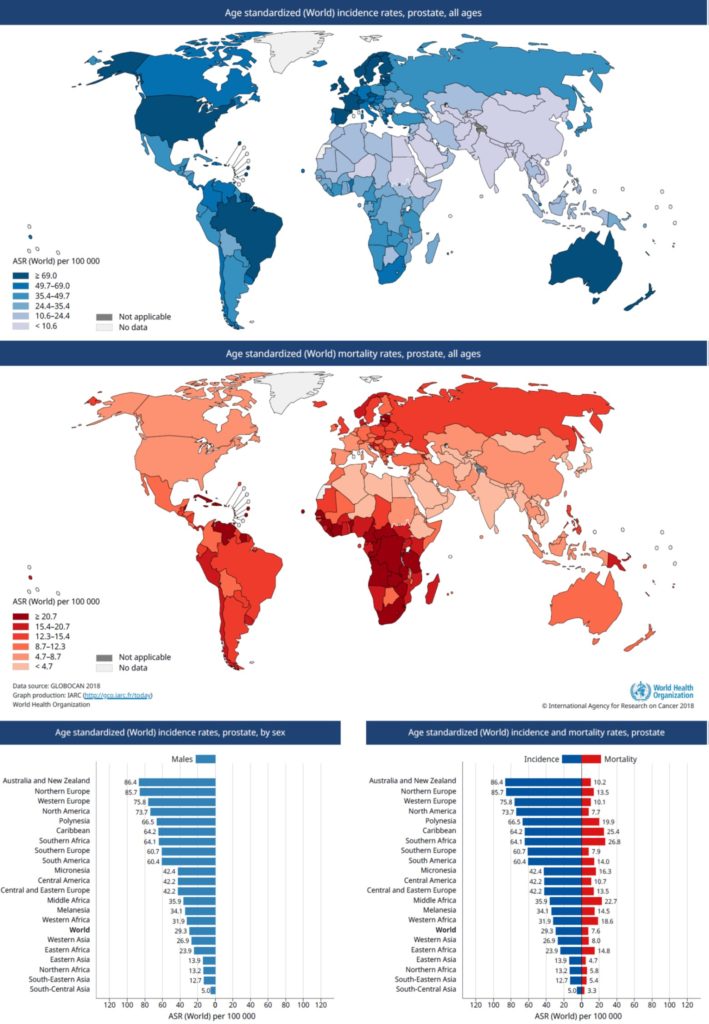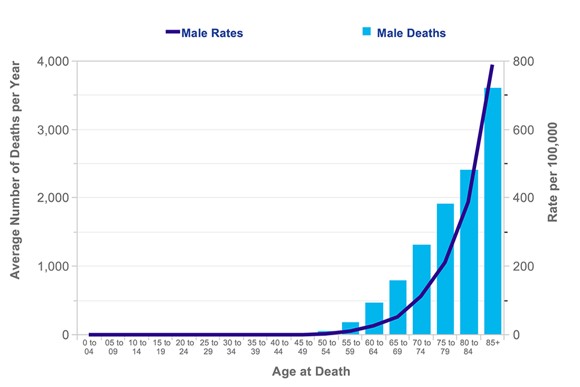Everything you need to know about prostate cancer
Prostate Cancer > Epidemiology
Few data are needed to understand better the important place of prostate cancer in the large spectrum of cancers.

Picture 13 : Worldwide incidence and mortality rates (source : WHO)
The incidence
The incidence is the number of new cases every year in a particular population. Based on Globoscan 2018, prostate cancer is the second most frequent malignancy (after lung cancer) in men worldwide, counting 1,276,106 new cases [6]. Prostate cancer incidence rates are highly variable worldwide as it reflects ethnic variation a well as differences in the use of diagnostic testing (picture 13).
The mortality rate
The mortality rate is the number of patients who yearly will die from prostate cancer. Prostate cancer is the third leading cause of deaths from cancer in the world with a considerable international variability in the mortality rates. Western countries stand amongst the highest mortality rates because of an increased life expectancy as age is as a recognized risk factor plays a central role with almost 55% of all deaths occurring after 65 years (picture 14) [7].
Risk factors
Regarding prostate cancer 3 risks factors have undoubtedly been identified.
In Western countries, the risk of developing a prostate cancer increases strongly with age as the risk for the age range 40-45 is around 0.3% to jump to 60% in men over the age of 65 years (picture 14 - male rates).
Men are not equal in front of prostate cancer. While African-American are holding the heaviest burden with the highest incidence in the world (French West Indies) Eastern Asia is quite protected in terms of incidence and mortality. Men of Western background stands in the middle with an intermediate risk.
Many studies have shown a higher risk of prostate cancer when first- and second-degree relatives have already developed the disease. The risk increases with the number of relatives affected by the disease in a same family, the age of onset and a closer degree of relativeness. In Europe, Pr O. Cussenot has been one of the most prominent academic in this field (picture 15) while in the US, Pr B. Carter proposed another hereditary transmission model. It is assumed than around one prostate cancer out of 6 is linked to heredity (Video 3).
Lifestyle and exposition to sunlight
The lifestyle is obviously an important factor as Japanese-born men who migrated to Hawaii reached the incidence of the genetically Western-background population while Japanese of the same generation who stayed in Japan had one of the lowest incidence rate in the world. Another interesting factor is linked to the direct exposition to the sunlight which plays a role on the vitamin D metabolism with an impact on the androgens production. The less sun you are exposed to the higher is the risk of developing a prostate cancer. For instance studies have shown that populations living in Florida have a prostate cancer incidence lower than those living in Michigan.

Picture 14 : The important role of age in the mortality rate due to prostate cancer

Picture 15 : Cussenot-Tassin hereditary transmission model (by courtesy of Pr O.Cussenot)


